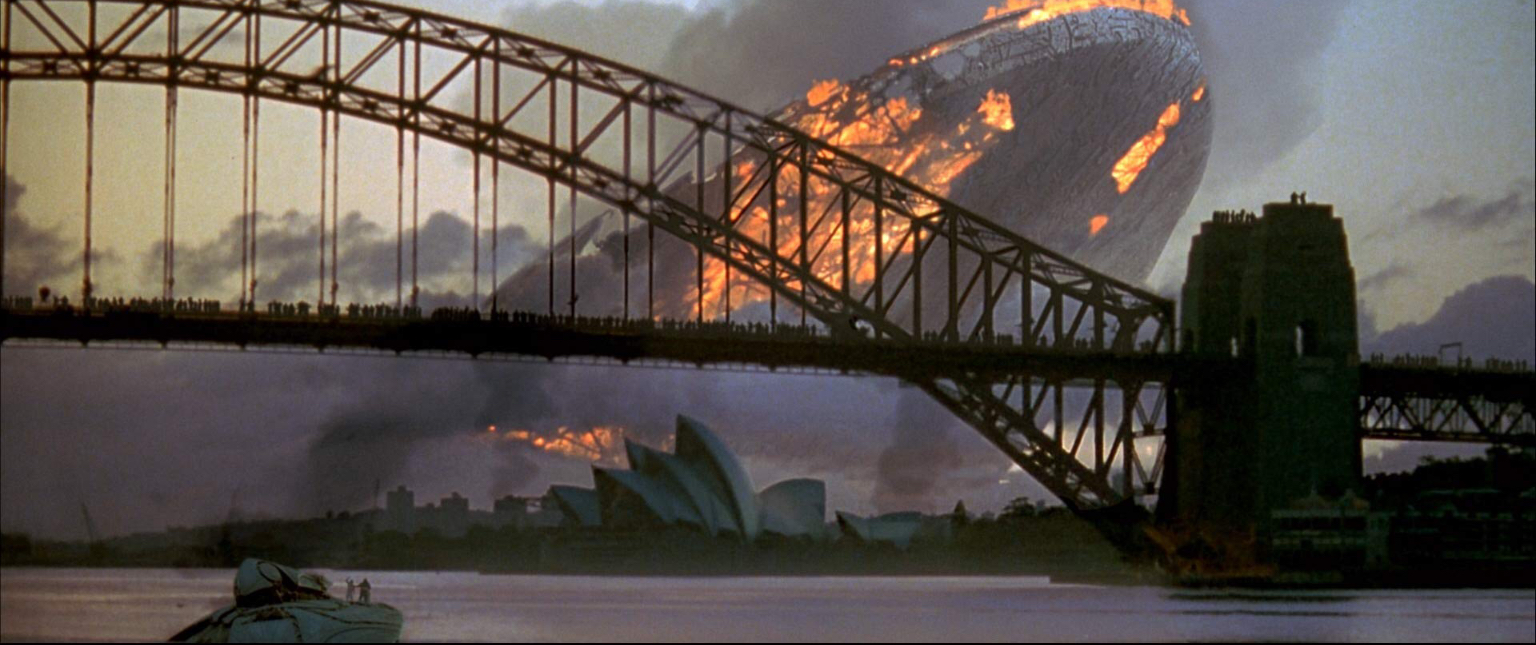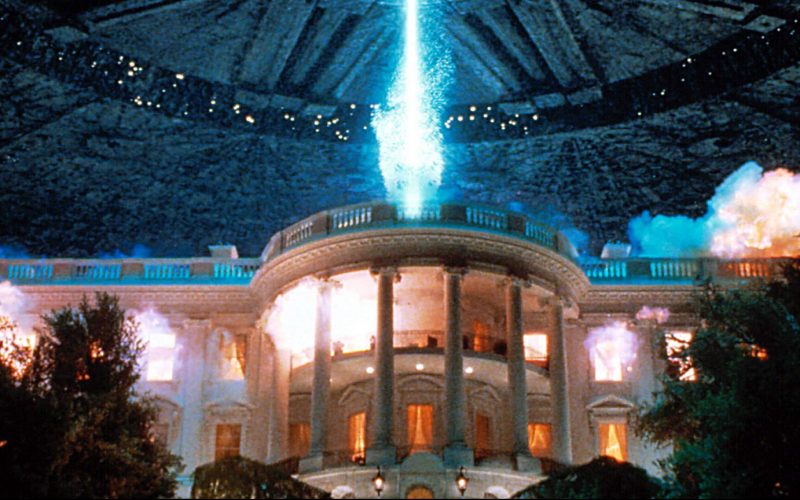Independence Day (1996) and the ‘High Concept’ Summer Blockbuster.
The ‘high concept’ film is a cinematic phenomenon that became popular in the 1980s. Simply put, it’s the idea that the story of a film can be summed up in one sentence, often with an outlandish synopsis. In the early 1990s this usually took the form of ‘It’s like Die Hard meets……’ When Roland Emmerich came forward with the idea of Independence Day, it’s easy to imagine that he pitched the idea as ‘War Of the Worlds meets 70s disaster movies, like Earthquake or The Towering Inferno.’
The benefit of the ‘high concept’ comes, not just from the ease of pitching an idea to a studio executive, but also for the marketing department to get the word out in simple and succinct ways when selling the film. This was certainly the case when I first saw the trailer for Independence Day some time in early 1996. I hadn’t heard that the film was in production (this was the pre-internet era) and the trailer took me by surprise. It looked huge, with scenes of mass destruction on a scale I’d never seen before. There was a distant vibe of familiarity of the key visuals used to tease and subsequently sell the film, that of giant circular motherships hovering over the major cities of the world, something which evoked clear memories of Kenneth Johnson’s groundbreaking early ‘80s TV miniseries, V.
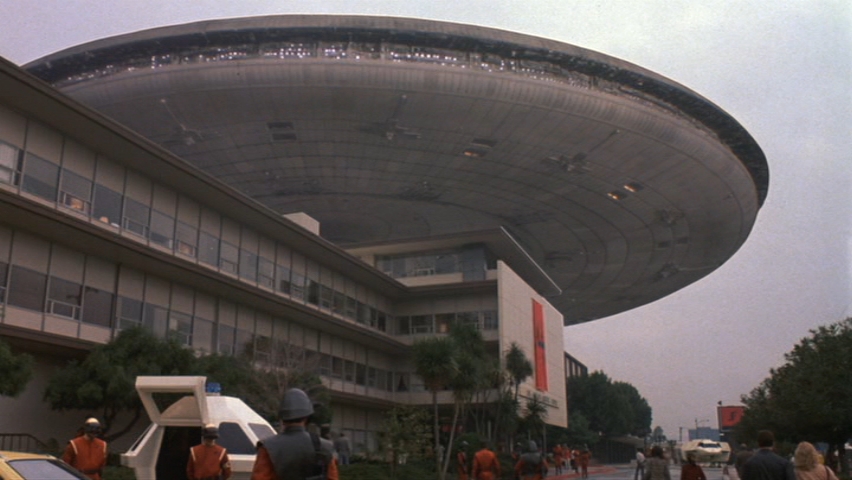
In many respects, although the concept is simple and hardly new, it was very much a game changer and helped rewrite many of the rules of blockbuster movies and, if it had the nerve to take itself more seriously, it may have been remembered with the same affection and reverence as films like Jurassic Park.
Independence Day takes the basic three act structure of storytelling and rigidly holds onto it, breaking the story up over three days. On the first day – July 2nd – the vast alien craft arrive and there’s a mixture of wonder, fear and optimism. Then the aliens attack and we’re presented with dramatic images of destruction, centred mainly around major American landmarks. On day 2 – July 3rd – it’s the day after the devastating initial attack. Humanity is regrouping and coming to terms with the loss of everything they had previously known. It’s in this part that we learn that the aliens had been here previously – in Roswell and Area 51 of course. The 4th of July – advertised on posters simply as ‘The day we fight back’ – chronicles Earth’s last stand and the final battle.
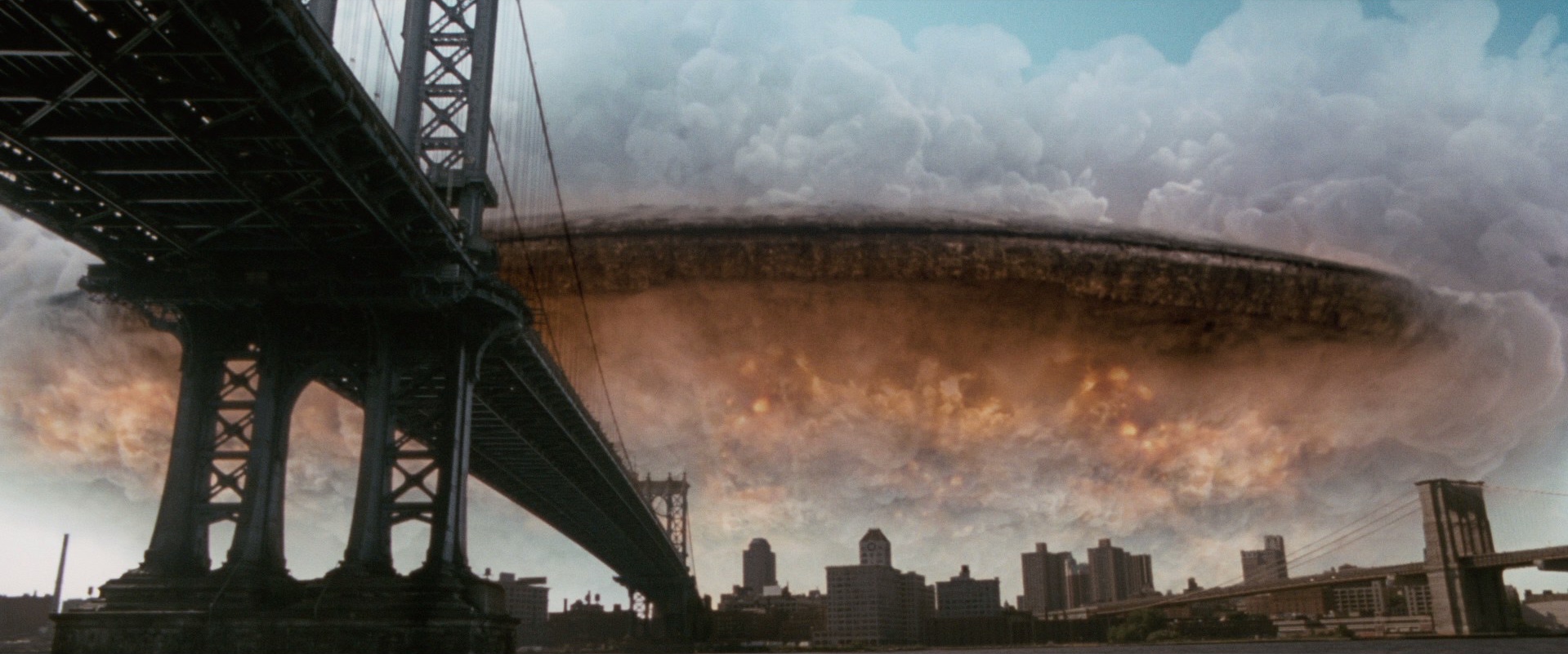
The most effective part is the July 2nd portion. The alien space ships are massive and really impressive in their execution and there’s a real sense of expectation and apprehension. We’re introduced to the main characters, each of which are given enough of a backstory to make them interesting without any of them dominating proceedings, again this evokes the large ensemble casts of films like The Poseidon Adventure (1972) and The Towering Inferno (1974).
Firstly we have Jeff Goldman as David Levinson, an engineer for a cable television company who is over qualified for his job but lacks the ambition to really stretch himself. His father is played by Judd Hirsch, a retired Jewish man who has lost his faith since the death of his wife. David arrives at work one morning and the building is in turmoil due to a problem with the company’s satellites caused by some form of signal interference. David hides away in his office and discovers a hidden countdown amongst all the noise. By the time he joins everyone else to tell them what he has found, the news of the invasion has it the airwaves.
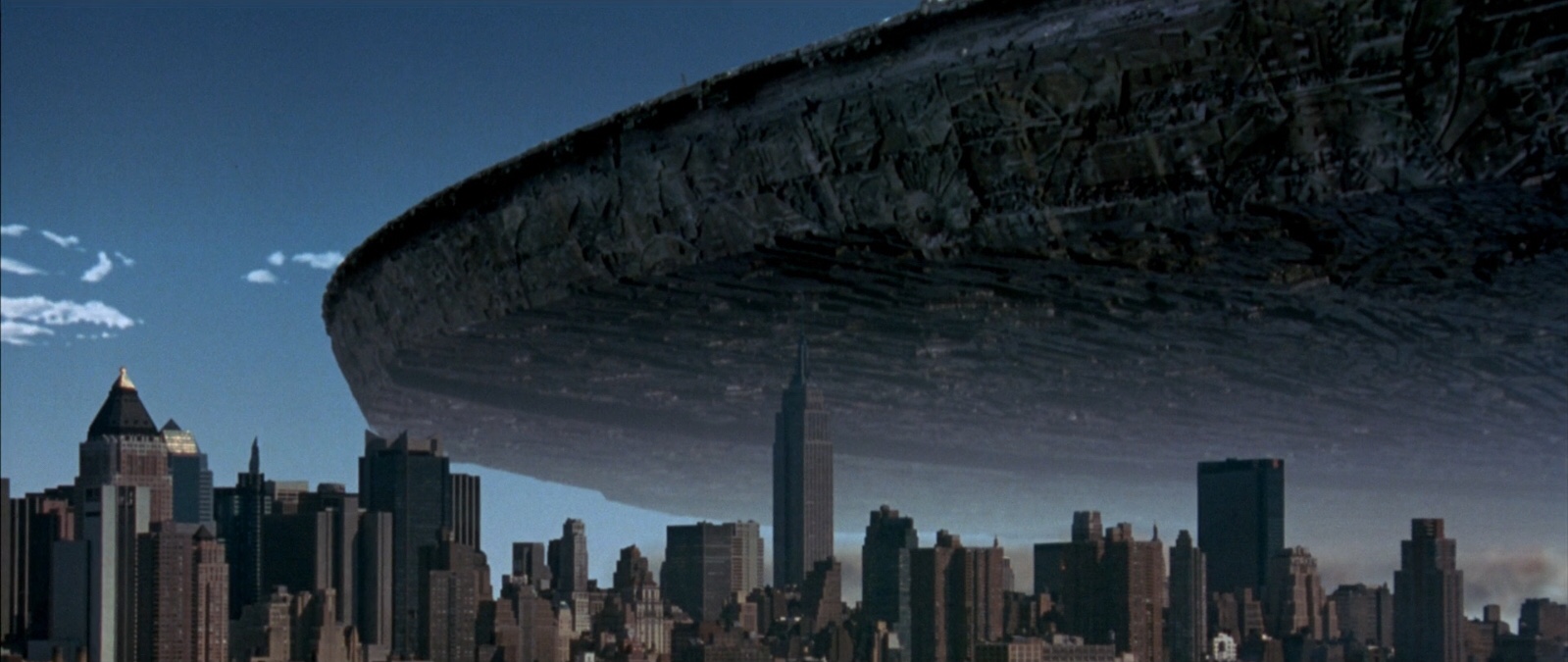
Taking an intuitive leap, David surmises that the aliens are coordinating an attack and that the official advice from the government – to stay at home – is incorrect. He and his father travel to Washington DC to speak to David’s ex-wife, Constance, who is now working for President Thomas Whitmore (Bill Pullman). Realising the gravity of the situation, the President orders the evacuation of all major cities. It is however, too late, which we shall get to in a moment.
Will Smith is Captain Steven Hiller, a USAF pilot living with an exotic dancer, Jasmine (Vivica A. Fox) and her son, Dylan. Hiller is called up to battle the aliens and he tells Jasmine to travel to the air base in El Toro. Smith was, of course, the big rising star at the time and was having such a tremendous run of success of releases, all falling on the 4th of July, that the media had started calling the holiday ‘Big Willie’s Weekend’.
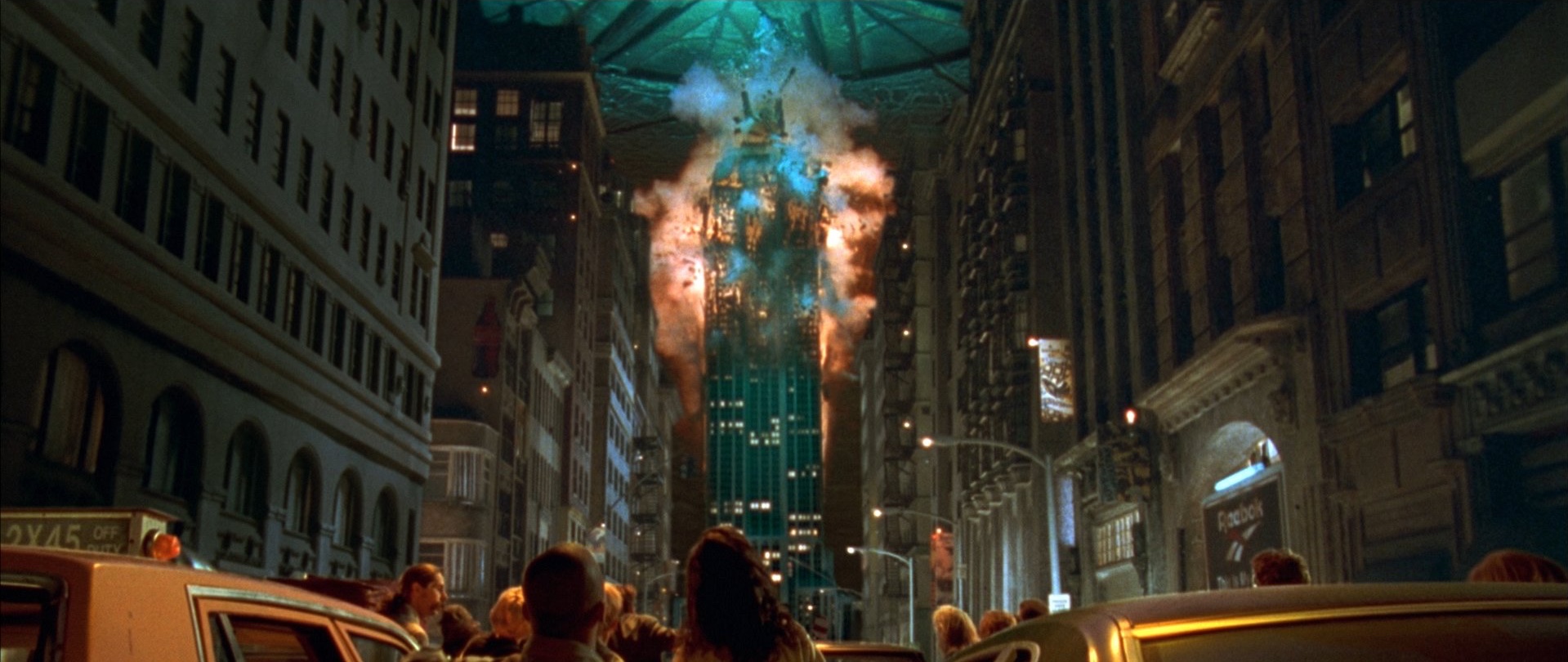
The highlight of the first act, and the reason that most of us went to see Independence Day in the first place, begins the moment the countdown ends and the aliens attack. There is no doubt that the destruction that fallows is amazingly presented and has certainly achieved an iconic status amongst special effects achievements. There’s a savage beauty to the scenes involving buildings exploding, fire raging through city streets swallowing everything in its path and iconic landmarks such as the White House being blown to oblivion. In the trailer it was this destruction that was used to sell the film and it certainly lived up to the hype. It was the first time in cinema history that we were able to witness destruction on such a grand scale and in such explicit detail. Even today, almost a quarter of a century later, it stands up. It is for this alone that Independence Day has survived the test of time and will long be remembered. The earlier establishment of characters is put to real use and there’s a very authentic sense of peril as we see Air Force One barely escape the furious tumult of fire.
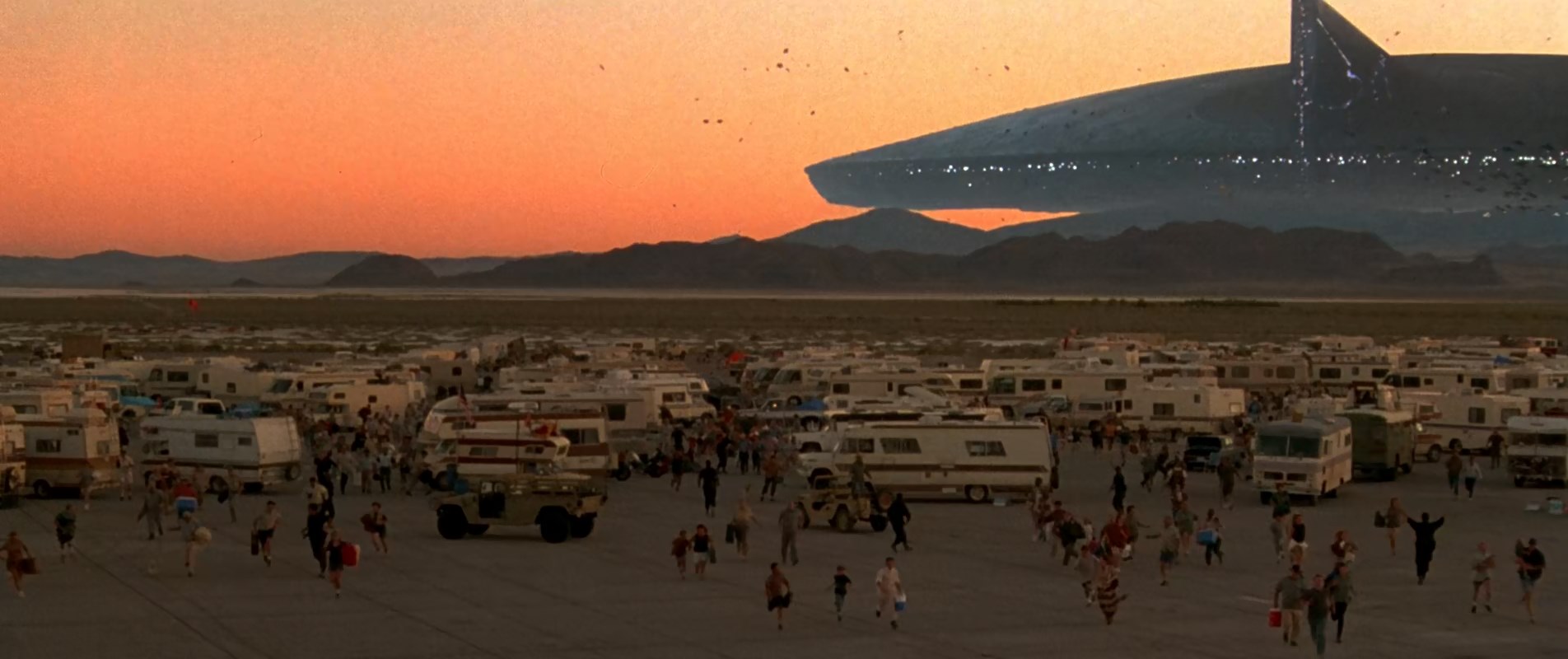
The second act – July 3rd – is unfortunately the weakest part of the film. It starts fine, as the characters emerge from the destruction and see, for the first time, the devastation that the aliens have left (which echoes the controversial 1983 TV movie The Day After) but as soon as we learn about, and then go to, Area 51, things start to fall apart.
We are introduced to the team who have been studying an alien aircraft that had crashed there 40 years previously, most of which are there for background decoration and fit with the expected image of dedicated scientist. The head of the group, Dr Okun, played by Star Trek’s Brent Spiner, is the antithesis of what a dedicated and brilliant scientist should be, even one who has been locked away for decades. His manic, anti-intellectual personality is somewhat grating and proof that the writers lacked the confidence to make a wholly serious science fiction film. It’s an attempt at humour which backfires. I know a lot of people hated the duo of Geiszler and Gottlieb in Pacific Rim but at least they actually had scientific theories and spoke like they knew what they were talking about. Discussing almost unpronounceable jargon with ease so the audience believes that the person they are watching is qualified has long been a staple of science fiction and medical dramas, however, Okun has nothing to say to convince us he’s a real scientist and in one particularly grating moment asks an assistant to pass him the ‘micro-thingy’. It’s a real pity as this terribly misjudged character almost brings down the whole second act.
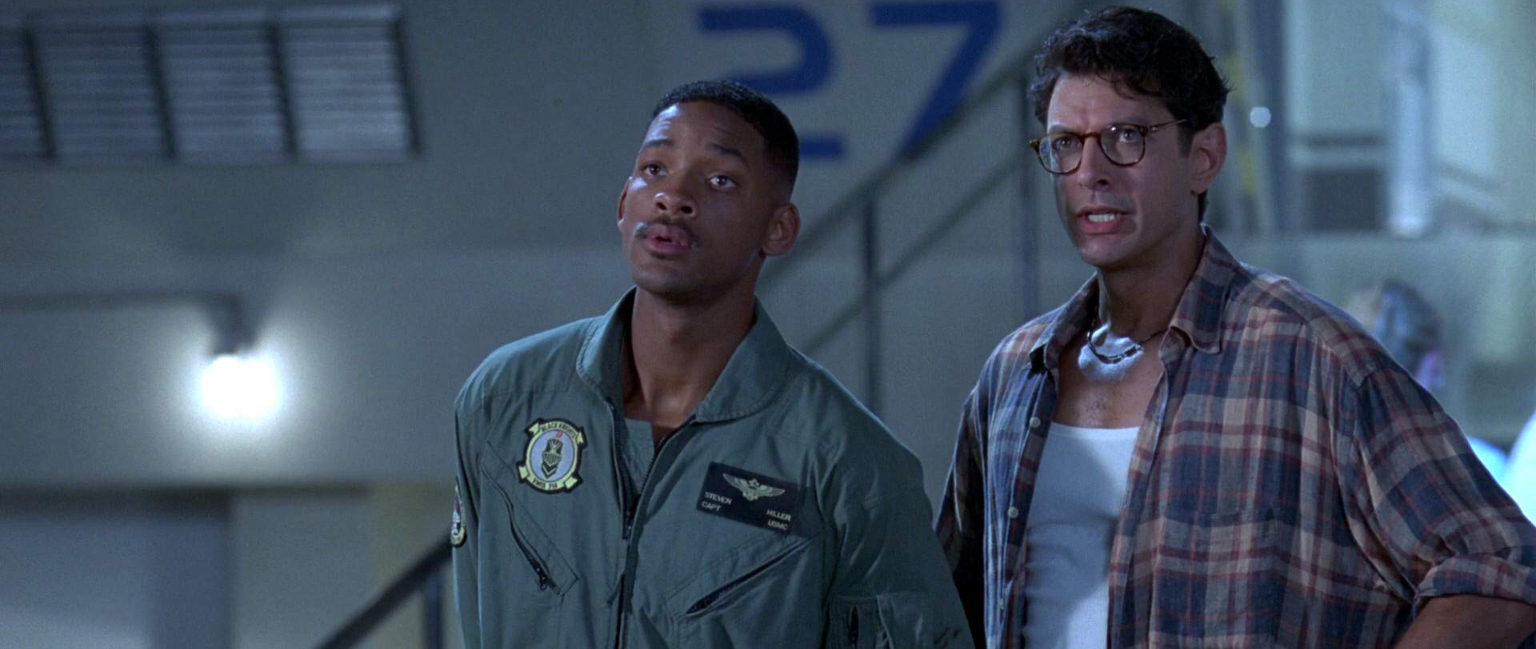
Thankfully, the final act – July 4th, ‘The Day We Fight Back’ – gets the film back on track. As alluded to in the pitch earlier, the finale of Independence Day cleverly updates the ending of War Of The Worlds for the computer age. David sees an opportunity to break through the aliens’ shields and so the whole world (seemingly waiting for the US to take charge and get them out of this mess) throw everything into one last attack. It may not be able to stand up to the first act but it‘s still a satisfying conclusion and not even Randy Quaid’s over acting (which he’s guilty of throughout) can spoil it. We also get the President’s rousing speech to the troops which still works effectively today. For a Welshman, it’s also nice to hear references to Dylan Thomas sneak in;
“And should we win the day, the Fourth of July will no longer be known as an American holiday, but as the day the world declared in one voice: “We will not go quietly into the night!” We will not vanish without a fight! We’re going to live on! We’re going to survive! Today we celebrate our Independence Day!’“
Independence Day is far from a perfect film in terms of its script and some of the performances and because of the unevenness of tone and some ham-fisted attempts at humour, it will never be ranked as one of the cinema’s greats, but as a satisfying large scale summer blockbuster it still works a quarter of a century later. The performances are mostly great (apart from those already mentioned that is) with Bill Pullman’s President, Jeff Goldblum’s engineer and Will Smith’s fighter pilot, all working very well. There are issues with the script but nothing of much consequence.
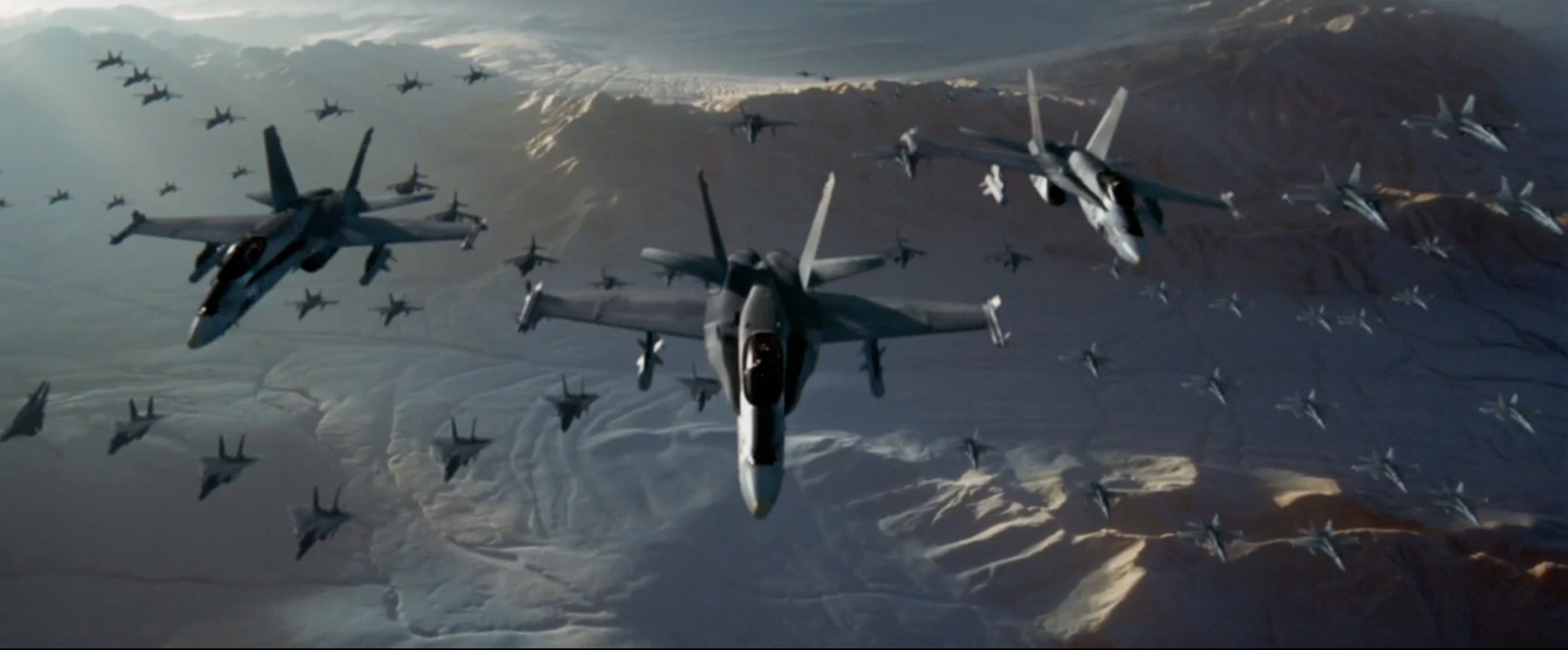
The design of the alien craft and the special effects that bring them to life still impress. This was made during a period when traditional effects were still being used and CGI was still in its infancy. If you haven’t seen it yet, try to see it on the biggest screen possible with the loudest speakers you can find. It’ll be worth it if only for that extraordinary first act. The alien craft are superbly realised in the way they swarm like insects and overwhelm their fighter jet opponents and I especially like the flea shaped mother ship. The design of the aliens themselves is fine, especially their silver eyes which convey a feeling of impenetrable mystery.
The legacy and impact of Independence Day can still be felt although most of it is in the back catologue of Roland Emmerich who went on to freeze America in The Day After Tomorrow, break L.A. into pieces in 2012 and mess around with the weather in Geostorm. None of these films, despite the improvements in special effects, can stand next to Independence Day for the sheer quality of filmmaking on display, and each becomes progressively worse.
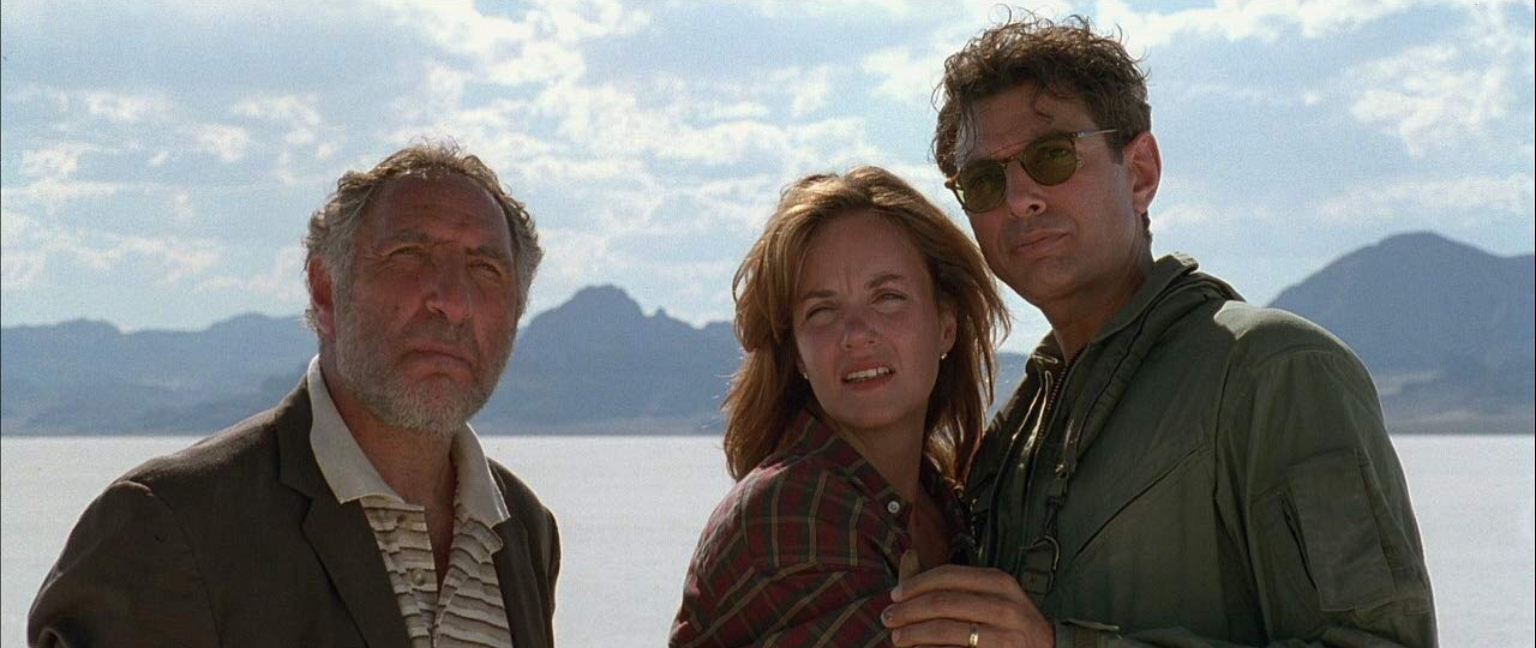
I recommend Independence Day with the caveat that there are moments that will likely make you cringe. I recommend it for the spectacular opening and for the rousing finale, for the jaw-dropping special effects and the chance to see Jeff Goldbum, perhaps Hollywood’s least likely action man, deliver a performance that rises above the chaos around him and still be memorable. This, along with Steven Spielberg’s Jurassic Park (1993) represents some of the very best examples of big budget ‘90s summer blockbusters, influenced by their 1970s disaster themed forbears, and is a film that will be engrained in the minds of anyone who was of a certain age in 1996 who’ll never forget the cinematic phenomenon that was defined by those iconic images of colossal alien ships hovering over America.
Film ‘89 Verdict – 7/10
